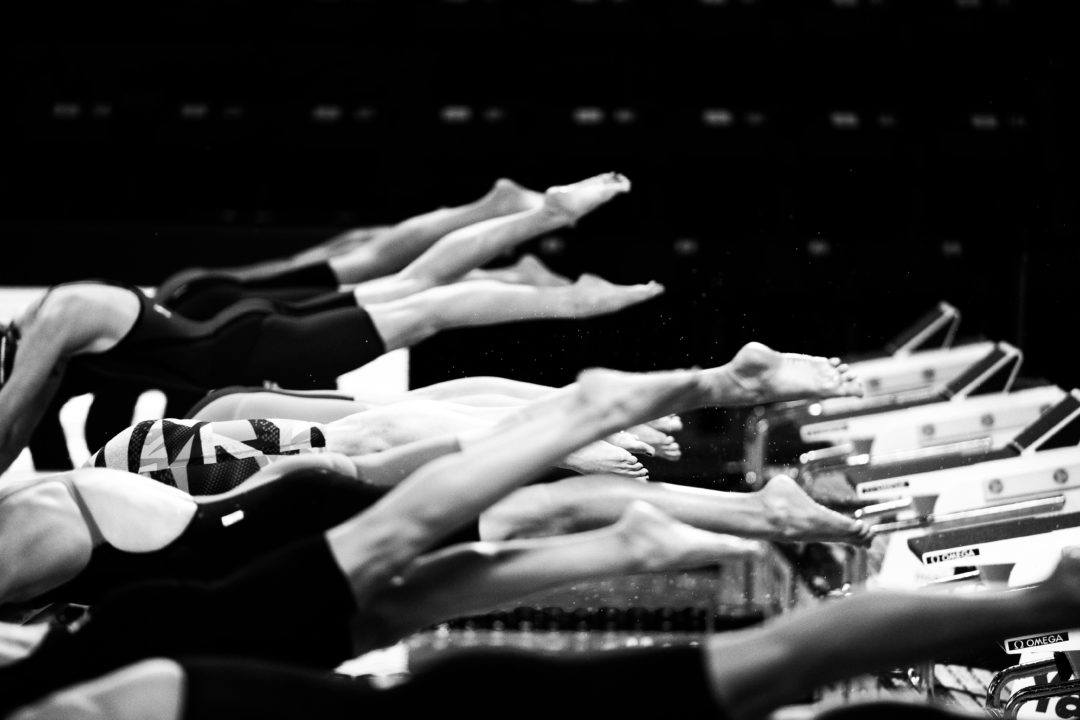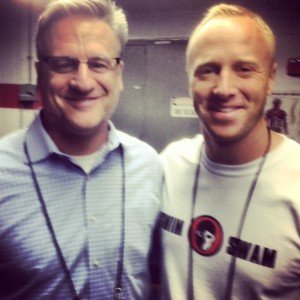Courtesy of Garrett McCaffrey, head coach Phoenix Swim Club
I started out as a swimming journalist. For years coaches opened up to me about their programs and let me pick their brains. Even though I didn’t realize it at the time, it was the greatest education in coaching that I could’ve asked for. So when Chris Ritter came to me about doing a podcast interview about my coaching, I was happy to do it. When he told me that my podcast really sparked interest, I was flattered. When he asked if I’d do a more in depth look at our training program, I was hesitant.
Putting your entire program out for people to see is intimidating. There are plenty of more accomplished coaches out there. Chris had to explain to me something I knew but wasn’t really aware of. Our program is not like any other program. Coaches are fascinated by the race pace approach but searching for an effective system to show them how to implement it.
Like all coaches, I’ve developed by learning from other coaches. As a swimmer, Sean Hutchison showed me how to truly commit to the process of becoming great. Coley Stickels opened my mind to a creative, higher intensity approach to training. Brent Rushall and Charlie Cunningham, through Herbie Behm, showed me how to organize and track that type of intense work. Rushall put science to something that Coley and Charlie figured out through years of coaching.
I believe the problem most coaches come across when they dive down this race pace rabbit hole is that it’s a lot harder people think. Swimming fast every day is brutal. In the first season of implementing these sets, we hit a plateau where the kids couldn’t swim faster. They even had trouble maintaining the speed they showed earlier in the season. It was an adaptation for them and an adaptation for me.
It’s one thing to know what is best for the swimmers but coaching is more about teaching that to the swimmers and motivating them to do it. So I tried to break it down to an even simpler level. How can I get them to go faster? So I came up with a progression to protect their fast reps. The idea is simple and one that many programs use, active recovery. As an athlete we did it multiple times a week with Brian Hoffer at the University of Missouri. We tried some drill and DPS reps between the fast efforts and the results we great. The kids attacked the sets with no fear. As the season progressed, we slowly took away the “cushion” and put those reps together the way that Dr. Rushall and Charlie Cunningham found to be the best for adaptation. The results were seen not only at the meets but in the swimmers mentality throughout the year. They really invested in the process
I played multiple sports growing up. I decided to commit to year round swimming because I was pretty good at it. During my years as a journalist, I’d often ask swimmers why they chose swimming. 90% of the time the answer was, “Because I was good at it.” Success is our sports’ biggest draw. A lot of programs ask athletes to wait for 4 months, 8 months, 10 months, and sometimes more before they see improvement. At PSC, we give them a chance, not only to improve but to track their improvement on a daily basis in practice. Usually that equates to time drops throughout the season, not just at the end.
No program is going to give swimmers speed or endurance or technique or best times. But this program gives swimmers the opportunity to improve all of those. Like all coaches, I took what I had learned and put together a system that made the most sense for me. Hopefully you can do the same and this program can help.
Learn more about Race Pace Training 2.0 at http://rittersp.com/rpt


Thanks – this looks great. My latest theory is that race pace is worthless unless you have a good athlete. So one way to protect the fast reps is to take a day off swimming midweek and do dryland that is not sport specific. I am talking non-specific training that you see a lot of bball and football players engage in. How to do a squat. Improving hip hinge. Vertical jump. Pushups and chinups. In the long run you then have an athlete who can actually get faster in your phase 1.